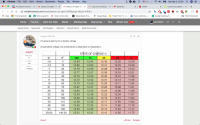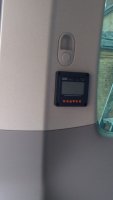GGaa
VIP Member
You mention the Victron. Does that have any technical advantage over a standard halfords battery charger. Also can you charge all the batteries from one poinyt or do you charge them separately?Solar isnt really justified on Economics its a good Gadget which makes life easier. In my case the fridge stays on 24/7 and the van never goes on hook up at home with the Victron maintaining my batteries to perfection. No possibility to forget to take it off or put it on. My wife takes the van for horse events she runs where there is no hookup and has a requirement to run a second freezer.
Still doesnt make economic sense but but what does on a Cali Ocean.

















